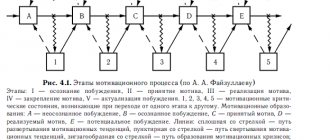Calibration and Sensory Sensitivity (Development Methods)
If you are able to feel the state of another person, you will understand whether you should force things or whether it is better to slow down, move on or stop!
This ability to distinguish the slightest nuances of the manifestations of other people is formed during the development of a special skill, which is called in NLP language - “Calibration” .
A professional communicator will be effective in his work to the extent that he tunes his sensory apparatus to perceive nuances, subtleties, seemingly insignificant details in the speech and behavior of his partner .
Accurate calibration requires touch sensitivity , i.e. the ability to notice changes (even the most minor) in such elements as:
- body position;
- gestures;
- facial expression;
- eye movement;
- color of the skin;
- breath;
- voice volume, speech rate;
How it's done?
Usually, before communicating with a partner, it is necessary to tune in to his perception. To do this, it is important to track his initial physiological state in which he is at the initial moment.
Then, in any way, for example, using questions, induce changes in his physiology (reaction). Your task is to tune in to your partner in such a way that you can easily see his physiological changes.
When changes in his physiology become visible and understandable to you, this means that you have calibrated and now you can move on to important communication.
Now you are able to receive answers on a non-verbal level even before the person gives them in verbal form. Namely, these answers are often more informative and truthful than words and are more important in the process of change.
Example
For example, We want to calibrate the partner’s physiological changes to the state: “pleasant - unpleasant” , in order to then determine his attitude to what we will say and offer.
To do this, it is necessary at the beginning of the conversation to talk about something that, as we know in advance, will cause a positive feeling , i.e. he will be pleased to talk about it.
At the same time, we will kill two birds with one stone. On the one hand, we will create a positive mood in our partner, which will naturally have a positive effect on the further conversation.
On the other hand, we will identify (calibrate) the physiological manifestations of this condition (facial expression, skin color, breathing, special gestures, posture, tone of voice, etc.).
Then we can move on to the main topic of our meeting and will be able to clearly notice our partner’s true attitude to what we will say. This will allow us to notice in time that our partner is uncomfortable with what we say, and to respond appropriately.
From the point of view of successful communication, it is important to be able to develop sensory sensitivity, primarily in relation to such human conditions as:
- pleasant - unpleasant;
- agreement - disagreement;
- true False;
- confidence - uncertainty;
- trust - distrust;
The ability to distinguish between these states in the process of communication with a partner allows you to obtain information, the importance of which is difficult to overestimate.
Tracking subtleties allows you to obtain maximum information about a person and the ability to control his unconscious in the process of communication.
Helpful internal questions that can help us determine if we are communicating effectively:
- How do I know that this person understands and is still interested in the conversation?
- How will I know that this person is collaborating with me on this problem?
- What internal state is this person in?
The following are several exercises designed to develop sensory sensitivity, which are usually used in the process of training NLP practitioners. It is advisable to do them regularly until the necessary sensitivity appears. It will be good if you find someone to accompany you in your activities. The more different people, the better!..
Use your feelings
I often run in the morning to wake up and feel good. Before I go for a run, I always decide which feeling to focus on while running. One day I pay attention to the sounds around me, the next I concentrate on what I see. And then I begin to notice what previously eluded me. I also realize which of my senses needs additional honing.
Exercises
You can adapt the following exercise to your own daily routine and do it as often as you like.
Exercise to develop feelings
The next time you go for a walk alone, try this exercise.
The natural environment, even in a city park, is a very interesting place for such an activity, since it provides a lot of material for the development of various senses.
You can choose a specific place and explore it for a long time . Then you will be able to notice how much more you will feel over time, how much more enriched your life experience will be. Do one exercise every day.
Vision
To begin, pay special attention to the landscape around you . Describe what you see. Are there trees around you? What color are their leaves? Pay attention to the shades of color. Look at people, buildings, paths. Notice the smallest details...
Hearing
Today, concentrate on the sounds you hear in your chosen location . Walking along the seashore, I begin to hear the rustling of leaves, the breeze, the rustle of the surf, the noise of traffic, even my own breathing. Open your ears and listen to the world around you!..
Touch
Focus on tactile sensations . When you go out into the sunlight, you will feel warm. If it gets hot, you will feel sweat running down your forehead or perspiration appearing. Once in the shade you will feel cool. You may have felt a breeze blowing through your clothes. Notice the smallest and most insignificant sensations.
Smell
Now we are concentrating on smells . Walking along the sea, I notice the smells of the sea, seaweed, cigarette smoke from a person sitting nearby, the smells of greenery.
If you are in a city, you will smell gasoline, exhaust fumes, a freshly cut lawn, flowers from a flower bed, the perfume of a woman passing by...
Very often, when the smell around us becomes unpleasant, we unconsciously turn off our sense of smell. Don't do this today. Be open to all smells, even unpleasant ones...
Taste
This exercise can be done while eating . Try to feel the taste of each ingredient included in the dish served to you. Recognize it. Don't think that taste is only associated with edible objects. When you develop sensitivity to your taste buds, you will begin to appreciate many delicious things.
As you continue to do this exercise regularly, focusing on different senses, you will notice how your sensations become more intense. You will learn a lot about the world and the people around you.
You'll be surprised how you didn't notice this before...
A few words about smell
Smell is the only sense connected directly to the cerebral cortex . The sense of smell is very strongly associated with memories . I'm sure many smells evoke certain memories in you. For example, the aroma of one shower gel is firmly associated in my memory with a trip abroad.
Each of us has a certain smell. Our body is a chemical factory constantly producing certain products.
Our body releases chemicals called pheromones . When a person is afraid, his body smells different than when he is in a state of ecstasy or sexual arousal.
We are attracted to the smell of a person. Perhaps the person close to you has become so close to you because you subconsciously like the smell of his body. One of my friends told me that he likes the natural body odor of his partner.
But the smell can not only attract, but also repel . Have you ever stood next to someone whose smell was unpleasant to you? And not because he hasn’t washed for a hundred years, but simply on a subconscious level ?
Sometimes one person attracts another visually , olfactorily , and sensually. We are attracted to what excites our senses.
Do not forget that we should be very careful about the signals people send us, so as not to be mistaken in interpreting their emotions.
If you like generalizations like “He looks happy” or “She's clearly bored” , stop!
Be very careful in interpreting a person's appearance. Haven't you ever been told that you look cheerful when you have cats scratching your heart?
By being able to recognize changes in the sensory signals that you send yourself, you can move on and master special exercises to develop sensory sensitivity in relation to others. Below are some exercises on how to do this. It is advisable to perform them with someone.
The first three exercises are aimed at the general development of sensory sensitivity in all three leading systems of perception of the world: visual. auditory and kinesthetic.
Visual acuity
(Performed by two people, 15 minutes per person at each stage)
Stage 1. Static.
1. Participant A takes and fixes some special pose and facial expression.
2. Participant B tries to remember all this as best as possible, after which he closes his eyes.
3. Next, Participant A changes individual elements of the posture and facial expression (for example, tilts his head, shifts the weight of the body to the other leg, changes the position of his hands, raises his eyebrows...) or leaves everything the same and gives a signal to Participant B to open his eyes.
4. Participant B task is to determine whether anything has changed with Participant A or whether everything remains the same. If there are differences, Participant B points them out, showing the changes detected.
After 6 or more successful attempts, A and B change places and repeat steps 1-4 .
Stage 2. Dynamic.
The meaning and stages of the exercise are the same, but now movements and gestures are added to the pose and facial expression.
Auditory acuity
(Groups of 3 people, 10 minutes each)
1. Participant A closes his eyes and tunes in to the subtle perception of sounds. Participants B and C produce the same sound (e.g. clapping hands, snapping fingers, snoring, whistling, sighing, etc.).
Changing their position in space so that the source cannot be determined, Participants B and C take turns making a sound and identifying themselves.
2. Participant A tries to identify and remember the difference between the sounds of each participant.
3. Next, Participants B and C reproduce sounds in a random sequence, without identifying themselves, and the differences between them must be constantly maintained.
4. Participant A identifies the source (B or C makes a sound) and immediately receives an affirmative or negative answer (“ yes” or “ no ”).
5. After 6 or more successful guessing attempts, Participants B and C gradually reduce the differences between the signals given until Participant A can no longer distinguish between them.
6. Next, the participants change places. Participants A and B choose a new set of sounds and repeat steps 1-6, while Participant B identifies the differences.
Tactile sensitivity acuity
(Groups of 3 people; 10 min each)
1. Participant A closes his eyes. Next, exactly the same instructions are used that are given for exercises to develop the acuity of auditory perception, replacing only the auditory information in steps 1-6 with tactile . Participants B and C take turns carefully touching A, while observing tact and identifying themselves at the moment when they touch A.
2. In pairs. Participant A closes his eyes, and Participant B places several objects on the table. Participant A then, with his eyes closed, feels them and names them in turn. Participant B confirms that the guess is correct.
3. In pairs. For this exercise, coins of different denominations are used. Participant A becomes the buyer, and Participant B becomes the cashier.
Both close their eyes. Next, the situation of paying for various purchases in a store is played out, where both partners must determine the denominations of coins by touch and make calculations.
The next four exercises are aimed at directly developing the ability to calibrate.
State Description
(two people, 25 min. each)
Stage 1. Three contrast states.
1. Participant A selects 3 physiologically different states of sufficient intensity to cause physiological reactions (for example, choose three people, one of whom evokes pleasant memories, the other unpleasant and the third neutral). Then he numbers them - one, two, three.
2. Next, Participant A says: “First state” and immerses himself in the experience of state 1, mentally transporting himself to the time and place where this experience arose. His goal is to relive this experience as fully as possible within a few minutes. Then Participant A says, “Two,” and does the same with condition 2. Then Participant A says, “Three,” and does the same with condition 3. If necessary, Participant A does this several times.
3. Participant B’s task is to calibrate each state according to physiology, simply paying attention to all the changes that occur with Participant A : skin color, breathing, posture, muscle tone, pupil size, etc.
4. Now Participant A does the same as before, calls the number and “joins” the corresponding experience. Participant B not only watches , but also describes the changes occurring with his partner. For example, “The corners of your mouth rise, your skin turns pale, your left cheek is more tense than your right, your breathing quickens...” , etc. It is important to ensure that this description does not include interpretations , judgments , for example, “You look happy...” or “You are worried right now...”.
4. Participant A again experiences experiences, but does not name their numbers. He can start with anyone. Participant B tries to determine which of the three experiences took place by naming them. Participant A confirms this or not.
5. The work then continues as follows: the experiencer goes through them in different orders until the observer learns to correctly identify them. If the observer cannot cope with the task, there is no need to say anything to him, but to continue working.
6. Then the partners change roles.
Stage 2. Voice and its features.
7. Next, the same exercise is repeated, but now the voice and its features . That is, Participant A , as before, is immersed in the experienced states and, at the same time, says something. Participant B , sitting with his back to him, calibrates each state by voice until he determines all states 5 times.
Stage 3. Kinesthetic signals.
8. Next, the same thing is done with kinesthetic signals. In this case, Participant A, before immersing himself in the experienced states, takes the hands of Participant B and holds them during the experience. Participant B task is to calibrate the difference in bodily touch.
9. After each episode, the participants change roles.
10. After this exercise is completed, you can easily take on more diverse experiences, for example, such as: curiosity and disinvolvement, trust and skepticism, motivation and indifference, etc.
11. Next, for more subtle development, three states are taken that are similar in the physiology of the experience (for example, admiration, high concentration, calmness, complacency, fun, high competence, etc.).
Agreement/disagreement
(two people, 15 minutes each)
1. Calibration. yes/no questions that you already know the answer to. Ask your partner to simply “think” the answer without saying it out loud. If you are, for example, doing a calibration with a 30-year-old man named Bob, you might ask him questions like:
- Is your name Bob?..
- Are you 16 years old?..
- Are you 30 years old?..
- Do you live in Japan?..etc.
2. Discernment. After you have practiced calibrating long enough to be able to identify differences in nonverbal responses in each representational system, test your conclusions by asking questions to which you do not know the answer. Try to indicate the answer and ask your partner to confirm whether you guessed correctly.
Lie
(two people, 15 minutes each)
1. Calibration . This exercise is similar to the previous one, but the difference is that now you are asking your partner not just to “think” about the answer, but to say it out loud . yes/no questions that you already know the answer to. Ask the participant to simply “think” about the answer and say it out loud.
- Spring is now?..
- Are we on the street now?..
- Are you wearing black trousers?..
- Are you 80 years old?..
2. Discernment. After you have spent enough time calibrating to be able to identify differences in nonverbal responses in each representational system, test your conclusions by asking questions to which you do not know the answer . In this case, the partner, at his own discretion, can tell the truth or lie. Try to determine when your partner is telling the truth and when he is lying.
Smuggling
In pairs. Participants are divided into a smuggler and a customs officer .
The smuggler's goal is to transfer contraband. The customs officer's goal is to identify this. The game goes as follows.
First, the item that will be contraband is determined. The smuggler leaves the room and decides whether this time he will be just a tourist or carry contraband. If yes, then he hides it, for example, in his pocket.
After this, he returns to the room and undergoes customs inspection. The task of the customs officer is to question the smuggler by his non-verbal manifestations to determine whether he has contraband or not.
Each successful search gives plus one point. Each unsuccessful search minus one point. The one who scores the most points wins. Before starting the game, you can calibrate both states.
0 Rating 0.00 (0 Votes)
Calibration upon acquaintance
Sizing in a pickup truck is very important when meeting a girl. While communicating with your new friend, just touch her and see her reaction. If she reacts positively to your touch, she enjoys communicating with you, she easily gives you her phone number or agrees to a meeting, then in most cases everything will continue to be positive with her. Although there are exceptions here too.
You can use calibration even before you approach a girl to understand whether it makes sense to get to know her at all. If a girl looks at you for a few moments, straightens her hair, smiles at you, feel free to go to her, she wants to get to know you. If she doesn’t pay attention to you at all and is in a hurry about her business, you can try to approach her, but no one here can guarantee you a positive result.
In general, before approaching a girl, I do not advise placing the main emphasis on calibration. Often women walk, think about their own affairs, or specifically try not to look at interesting men, because they are embarrassed to show their interest. Here it is rare to guess her true intentions. Therefore, if you like a girl, approach her. This way, you will quickly find out how she feels about you, and then you will not regret missing out on the opportunity.
In conclusion, I want to say that the ability to correctly calibrate girls is one of the most important foundations of a pickup truck. This skill allows you not only to quickly get a woman into bed, but also to build a harmonious relationship with her, thanks to an understanding of what she really needs.










